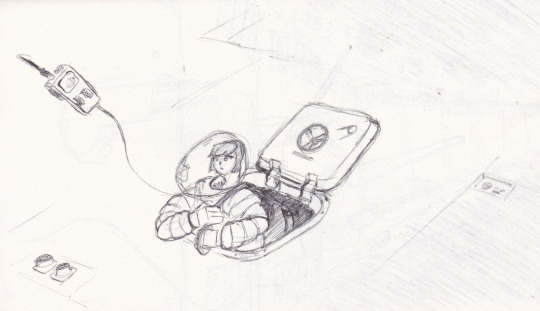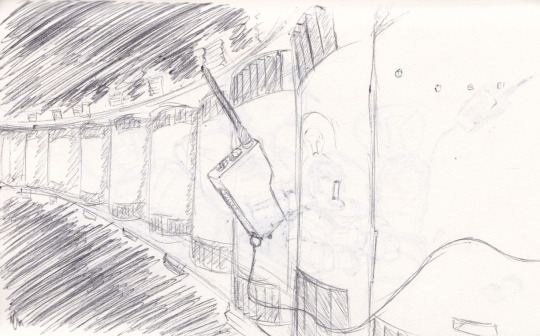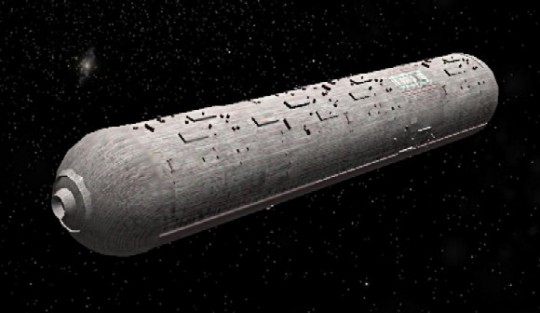#rungworld
Text



The rung world: Thousands of cylindrical space habitats loosely linked around an entire orbital circuit. Each one is the size of a country.
Some people jump between cylinders with no more than a space suit as a form of recreation.
3 notes
·
View notes
Photo


McKendree Cylinders
Closed, rotating cylindrical habitats have been built since the Interplanetary age; at first these were no more than a hundred metres or so in radius, the smallest possible radius that could give Earth-like internal centrifugal gravity while avoiding excessive coriolis effects. But over time the habitats became larger, until they reached the maximum possible size for habitats constructed with non-exotic materials.
A McKendree Cylinder is designed much like an O'Neill Cylinder but built with the carbon buckytube technology used in Bishop Rings. As such McKendree Cylinders with an interior gravity of one standard gee can have a radius of 1,000 km and a length of 10,000 km. This radius and length will give a single McKendree Cylinder more than 62,857,000 km^2 of living area or about 12% of the surface area found on a Gaian type planet. [Please note: Humans lived on only 10% of the surface of Earth due to inconvenient surface features - oceans, mountains, deserts, icecaps, etc. On the other hand the entire planet's biosphere was available life support.]
However McKendree Cylinders can also be linked into counter-rotating pairs (side-by-side like the original O'Neill colony design or nested as in some other common designs) to double the living area and counter gyroscopic effects so that the cylinders can be oriented in any chosen direction. (For example; with their axis pointed towards the local star for easier direct lighting.)
When multiple levels or floors are added to the design a McKendree colony can quickly equal a Gaian type planet in total surface area. 'Ceiling height' in a multi-floor colony is generally determined by its psychological effects on the inhabitants but in the counter-rotating nested designs an inner cylinder must clear the rimwalls and upper atmosphere of the cylinder below it. This requires more than fifty kilometers between levels in a standard gee habitat; habitats with lower values of gravity can be larger, but the separation between the levels must be greater, as the scale height of the atmosphere is greater in low gravity conditions.
A full-sized McKendree habitat can be constructed from a large asteroid or dwarf planet, or from a number of smaller objects. A typical dwarf planet of 1000 km diameter can contain enough material to build 12 Mckendree cylinders, with a potential population of hundreds of billions of sophonts.
The internal landscape of a McKendree cylinder may contain landscape features such as seas, lakes, hills, and even mountains; but these features add mass to the habitat and therefore increase the load on the buckytube fibres holding the cylinders together. To cut down on the additional load the landscape is constructed with internal voids and arches, to make the hills and mountains as hollow as possible; these internal voids can be useful for storage.


A Rungworld is an orbital structure that links together several hundred McKendree Cylinders into a ring that resembles a bent ladder. The ring could float in space, surround a planet, or have a star at its centroid.
Unlike the Ringworld, spinning the entire structure for gravity wouldn't be necessary as each individual cylinder is spinning around its own axis to provide spin gravity to the cylinder's inhabitants. Cylinders could be added or removed from the overall ring as needed, the remaining cylinders would adjust their spacing to compensate.
Each cylinder could be a nation state, with wildly differing landscape and climate, even differing atmosphere if alien races were included. Fleets of spacecraft would travel between and trade goods with neighboring cylinders.
1 note
·
View note